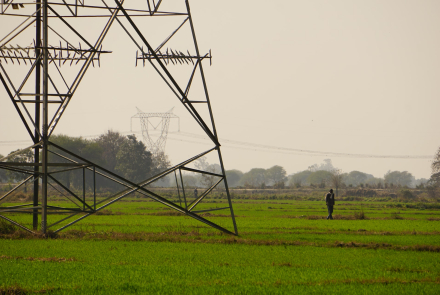
Do coal exports to India have to go up before they can come down?
Australia and India’s energy relationship is dominated by fossil fuels and needs a fast-tracked shift to solar, wind, and hydrogen under the new Australian Government, Mousami Prasad writes.
Australia-India relations are growing stronger, and energy is a sector where this partnership is especially important. Currently, trade in fossil fuels – primarily coal but also gas – from Australia to India, shapes energy ties.
Coal is used in both power generation – known as thermal coal – and for the refinement and production of metals like iron and steel – known as coking coal. Currently, India imports about 50 million tonnes of coking coal each year to support its significant refining capacity, with Australia accounting for 80 per cent of that total in 2021.
Australia’s fossil energy exports in 2021 were $123 billion, made up of $63 billion of coal, $10 billion of oil, and $50 billion of gas, with India accounting for $14 billion of coal exports. This represents about 11 per cent of Australia’s total fossil energy exports in total and 22 per cent of Australian coal exports.
The new Australian Government, which is vocal about its climate goals and its vision to make Australia a ‘renewable superpower’, should seek to find alternatives by expanding trade and investment in renewables.
The Australia-India energy partnership can play a larger role in a low-carbon world. Renewable energy investments, particularly in solar, wind, and green hydrogen are expected to grow and gain traction in India in coming years, and Australia can help meet this demand.
Moves in this direction have already been floated in energy dialogues and joint ventures to produce green hydrogen and solar are springing up too. While the groundwork for this new relationship began under the previous government – in 2018, Australia published its India economic strategy through to 2035 – the new government can build on this significantly.
In 2020, the bilateral relationship transitioned from a strategic partnership to a comprehensive strategic partnership. This involved a number of energy dialogues, virtual summits, ministerial visits, energy talks at Quadrilateral Security Dialogue meetings, and eventually an interim free trade agreement in April 2022.
In 2018, India’s goal was to install 175 gigawatts of renewable energy capacity in the country by 2022, but since these talks, India has updated its target to 450 gigawatts by 2030.
These national commitments, along with the falling cost of solar and wind technology, are likely to place renewables at the centre of Australia-India energy ties.
While trade of fossil fuels is unlikely to decline in the short term, this transition can be fast-tracked. One way this can happen is for fossil fuel exports to India to actually increase before they can be slowed. This is for several reasons.
First, demand for coking coal in India is expected to remain high, with the country’s steel industry aiming to produce 300 million tonnes of steel by 2030 to support the construction of roads, railways, ports, airports, and even renewable energy infrastructure like wind turbines. This is more than double current output.
The high demand is aided by a government push to grow the manufacturing industry through its ‘Make in India’ policy, and the recent removal of import duties on raw materials in the steel sector, including coking coal.
Second, depending on the weather and alternate energy sources, demand for imported thermal coal may rise too, as the effects of climate change manifest themselves in extreme events such as heat waves and floods that are causing several Indian states to experience power outages.
Ultimately, policymakers need to keep the lights on during these events.
Third, both households and businesses are likely to increase their demand for natural gas in India as they switch from biomass like wood to liquified petroleum gas for cooking. Currently, 500 million Indian people burn biomass as cooking fuel, releasing emissions with every meal.
Finally, the prospect of zero tariffs on coal and gas and no tariffs for five years on oil under the free trade agreement will likely increase exports of coal and gas from Australia to meet increased energy demand in India.
But increased fossil trade in the short term is not all bad news.
Executed right, increasing trade in the short-term will drive up living standards in India and pave the way for the two nations to build trusted business relationships between energy companies – many of whom have both fossil fuel and renewable assets.
The free trade agreement can boost activity during a transitionary period that gives India a chance to build infrastructure while both countries shift trade and investment into the renewable sector over time.
Considering the ambitions of the new Australian Government and India’s rapidly changing energy landscape, this transition to clean energy can shape the two countries’ energy ties.
Their leaders must look for ways to accelerate clean energy infrastructure, meet India’s growing energy needs in the short term, and prepare a transition that does the right thing by both countries and the climate in the long term.
Updated: 1 July 2024/Responsible Officer: Crawford Engagement/Page Contact: CAP Web Team












